Recognizing what you don’t know: Kathy Halbreich x Kamiya Yukie
March 5, 2023
The landmark 1989 exhibition "Against Nature: Japanese Art in the Eighties" moved the needle on how Japanese art was understood overseas and raised the profile of several contemporary Japanese artists, such as Dumb Type, Miyajima Tatsuo, Morimura Yasumasa and Otake Shinro. Kathy Halbreich, Executive Director of the Robert Rauschenberg Foundation, was one of the exhibition’s curators and made many trips to Japan during the research period and later. Kamiya Yukie, a steering committee for APJ, spoke to Ms. Halbreich in New York recently about the impact the exhibition had on the art world and on her personally, as well as opportunities for cultural exchange and how best to support artists.
 From left: Kamiya Yukie and Kathy Halbreich at the Robert Rauschenberg Foundation in New York
From left: Kamiya Yukie and Kathy Halbreich at the Robert Rauschenberg Foundation in New York
No strings attached
Kamiya Yukie: As an executive professional of museums and curator of the landmark show "Against Nature", you are the best person to hear from about cultural exchange and professional networks. First, I wanted to talk about the exhibition—people are still talking about it, and many of the artists. 1989 was the first exhibition, so your research would have started earlier than that.
Halbreich: In the mid-80s, yes.
Kamiya: And the exhibition continued to tour in the United States until 1991. It had a very big impact, not only for the Japanese artists but also in the United States. So, this can be a case study of how we can inform others of the new generation of Japanese contemporary artists. Because at the time, everybody was a local artist. But those opportunities gave them so much international experience.
Could you please tell us about your experience of curating "Against Nature"? Before you started this research, did you have any information about or contact with Japanese artists at the time?
Halbreich: I would say a slight knowledge. Enough to want to go to Japan, which I did at the invitation of The Japan Foundation along with a number of other museum directors and curators from the U.S. It was something that The Japan Foundation was doing to encourage a wider network for Japanese artists.
Kamiya: So, it didn’t start specifically with the exhibition, it was more a kind of general research?
Halbreich: Yes. The Japan Foundation invited my colleague Thomas Sokolowksi, [then director of the Grey Art Gallery at New York University], who worked with me on "Against Nature," and Nanjo Fumio, whom we met as he worked for The Japan Foundation. Then we also met Kohmoto Shinji, [curator at the National Museum of Modern Art, Kyoto]. I think it was terrifically useful that The Japan Foundation invited us with no strings attached. Just to come and see contemporary Japanese art within the context it was made.
Kamiya: What kind of places did you visit?
Halbreich: It was a very prescribed trip, there were things we came to understand we didn’t see—after we had been there a few times we had a different understanding of contemporary art than The Japan Foundation was initially exposing us to. I don’t think that’s unusual for a government agency, in general. But they invited us to really just see the museums, many of which were somewhat newly built and pretty empty, as well as quite traditional artists. Meet colleagues, visit artists, though of course we didn’t go to artist studios because we came to understand that’s not how Japanese artists can work, which was a bit shocking, actually. We did a lot of our homework across cups of coffee in shops, or in the hotel lobbies. Those became the equivalent of studios, and artists would come and we would talk to them, look at their slides.
Kamiya: In any other city, we can easily visit several artist studios in one day. But curators from outside Japan are always confused or complain, why can we not visit artist studios in Japan? It is simply because they do not have studios and work at home or have one in a remote suburb.
Halbreich: It took us a bit of time to realize that artists just couldn’t afford having permanent studios. But I think you get the hang of it after a while, after a few dozen cups of coffee, you kind of know how to begin the conversation. But yes, it started [as] pure research, and Tom Sokolowski and I really loved being in Japan, and we loved the aesthetic. I remember going to a restaurant that only served soba but in like 20 different ways, and it went from the appetizer through to dessert. It’s just a very rarefied, very aestheticized culture, with a bit of kinkiness right below the surface. And that was fascinating to us. I stayed on after the trip was over for another couple of weeks and went to things like Bunraku puppet theatre and Kabuki and the garden with many different types of mosses. The Japan Foundation wanted us to see the traditions of Japanese art: architecture, scrolls, kimonos, textiles, everything. And that was very helpful.
Kamiya: To start to understand the background of the country.
Halbreich: I think what I learned from the many trips I made to Japan was that you had to make many trips. I mean, I was trained in a Western culture, so that was the lens with which I looked at everything. For example, I remember being very perplexed why there was no three-point perspective in the scrolls and I really thought, is it possible that we actually see differently? Renaissance space is not present in Japanese art. And that was like, oh my god, I thought that perspective was everywhere.
Know what you don’t know
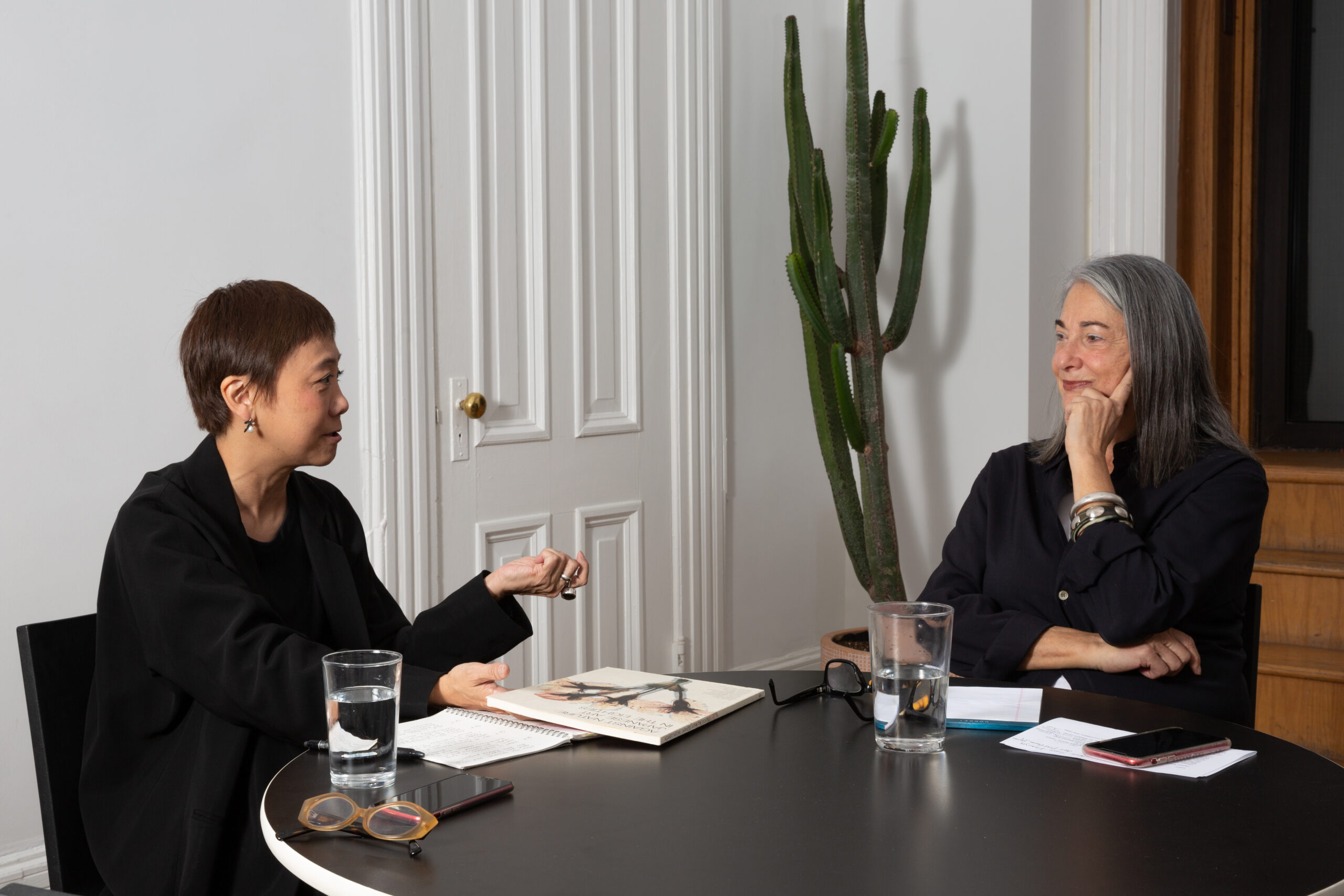
Halbreich: At one point you asked me, what did I learn about doing this kind of work? One is to be modest and humble, because really you don’t know anything. I’ve spent the most time in Japan than any other place other than Germany, and it is still a different world than the one I am accustomed to. Now, of course, Japanese artists went to Europe and Paris, and there’s a whole history of that interchange. And of course, the most radical Western artists absorbed a lot from classical Japanese work. So, there was always this exchange, it’s just I think contemporary curators were more ignorant of what was meaningful and present than perhaps those classically trained.
Anyway, the initial visit was pure research. Tom and I didn’t know each other, we came to know each other on that trip, and it was a very strange group of people. I remember one very illustrious person—this is another reason why I think you should be humble—from a major museum, looking at a small Gutai painting and saying something like, well this is grade C abstract expressionism. And I said, “Are you sure?” I mean, we’re on an island that has had a catastrophic bombing, unlike anywhere else in the world, this is post-war work, it is reflective of a culture that has only a little to do with abstract expressionism. But that’s what I mean. You could be supremely well educated and in a very high position, and still be ignorant.
Kamiya: You are so generous in the way you approach and encounter another culture. And I appreciate that you went to Japan with this kind of humbleness, to try to observe what is going on on the other side of the globe.
Halbreich: But that is what was exciting, to have to open your mind and eyes, and erase slightly your own expertise. To be porous enough to absorb new ideas about how the world was depicted and shaped, and why. The first trip was just a miraculous experience for both Tom and me, and so honestly, we conspired to do this show simply because we wanted to go back to Japan.
The significance of the artificial
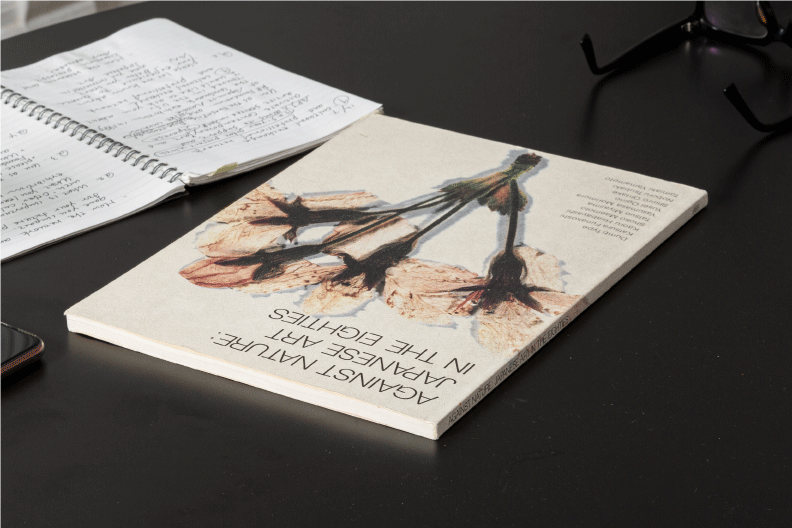 The exhibition catalogue for Against Nature: Japanese Art in the Eighties
The exhibition catalogue for Against Nature: Japanese Art in the Eighties
Kamiya: So, after the first trip, inspiration emerged and you were thinking about curating an exhibition. I remember that Mr. Sokolowksi, before he passed away, he explained to me the cover image of the exhibition catalogue: This is a cherry blossom but artificial. It’s exactly what you were expecting to see—in parallel with the tradition, you actually see that different side of Japan: artificiality, urban-ness, something transforming. Could you tell us how you came to the idea of the exhibition?
Halbreich: We talked to maybe a hundred people, but we purposely talked to people who were specialists outside of the arts. So, we talked to a lot of people about Japan’s attitude towards itself and the world in the post-war period. The thing that surprised Tom and me was, when you go to Germany, every bar has a picture before the war and after the war. [In Japan,] there was hardly any discussion about the war or imagery of the war. As I remember, on the first trip the only indication we saw that such a thing existed was a boutique called A-Bomb, which we were never convinced was well understood. We saw all these kids with sweatshirts and T-shirts printed with sort of haiku expressions and we thought they were profound. But an American art historian of Japanese art told us, “Oh, nobody knows what they’re wearing. It’s in English. It’s like you wearing a cotton garment with Japanese letters.” I would have no idea what it meant, neither did they. So, we had this whole theory about language and its relationship to the imagery we saw—it was wrong! It was like missteps as well as steps forward, misunderstandings that led us forward.
I actually believe that failures are very important in that they open new avenues. OK, I can’t go there but I could go there or there. And I think we were constantly doing that during cherry blossom season, we were very happy to walk through the parks, but then we saw all these fake blossoms hanging off of light posts. This combination of the artificial and the natural became crucial to us. For example, ikebana was living artifice. We began to think about ideas of representation that were different than we had been exposed to in our own histories...
Morimura is the perfect artist to discuss the artificial—I mean drag is artifice, inhabiting another persona. That isn’t to say that the artificial is devoid of meaning, it’s not, it has very significant meaning...
Collaboration was key
Halbreich: Artists were very important in helping us because they were forthright. But let me give you another example of what was useful. We decided we wanted to work with Shinji because he was the only person on our first trip who said “no” to us. As in, “No, that’s not correct.” Nobody else said that to us. I mean, we might be waiting for days because they meant no, but they said it in 25 different ways. But Shinji actually said no. And we though, OK, we need him. We really depended on Shinji and Fumio a lot. But then we also met people like Kobata Kazue-san, who was also very important to us. She was working for artforum in some capacity, but was a translator for us, and day after day she would have to sit there and listen to us and listen to everybody else. I mean, they were very long days. But eventually we really started to talk about her own perceptions, and she was of course very involved in performance, which was very important to us.
I can’t remember the name of the man who helped us understand why there weren’t images of the post-war period, why it was so repressed. And [on one trip] we stumbled upon the museum in the park that actually had a kamikaze rocket. I mean, first of all we were shocked; we hadn’t seen anything like that. Second of all, it was so small that it was hard to imagine a human moving under water in this thing. But then we looked at the label—and it was borrowed from the U.S. government! All these things mean something. We may not grasp the right meaning right away, but they have the meaning. They’re reflected in the art... I went to visit the former director and curator at the Walker [Art Center], before I became director there, as they had been in Japan and done a lot of important research work for their exhibition, Tokyo Form and Spirit. They actually said to me, “There really aren’t that many good Japanese contemporary artists, although there’s great design, whether it’s clothing or architecture or graphic design.” How can that be? But I think it circles back to this idea that there were no studios to visit, there weren’t a large number of galleries.
Kamiya: I’m glad to know you were working with Japanese collaborators who really helped you.
Halbreich: I don’t think we could have done it without them. We would have been talking to ourselves, and we would have been very limited in what we knew or could say. In very different ways, they were absolutely instrumental in introducing us to major ideas, in pointing a way, in the politics, which were very complicated.
For example, The Japan Foundation—which again was enormously generous and very pleased that Tom and I were doing the show—towards the end when we landed on the title and some of the imagery; they were not pleased. I remember the final meeting very well. I was very pregnant and that seemed to make everybody very nervous. I still don’t know where pregnant women are [in Japan]. I swear, we never saw anybody. Being pregnant, it turned out to be a very good negotiating tool [laughter]. But I remember their kind of horror—"Against Nature"! And we had a long talk about it and I said at one point, “Well, the thing I so much admire about Japanese society is that when somebody gives you their word, it has meaning, and you kind of gave us your word that we would be free to imagine this exhibition in our own way.”
I still think "Against Nature" is a really good title.
‘It changed my life’
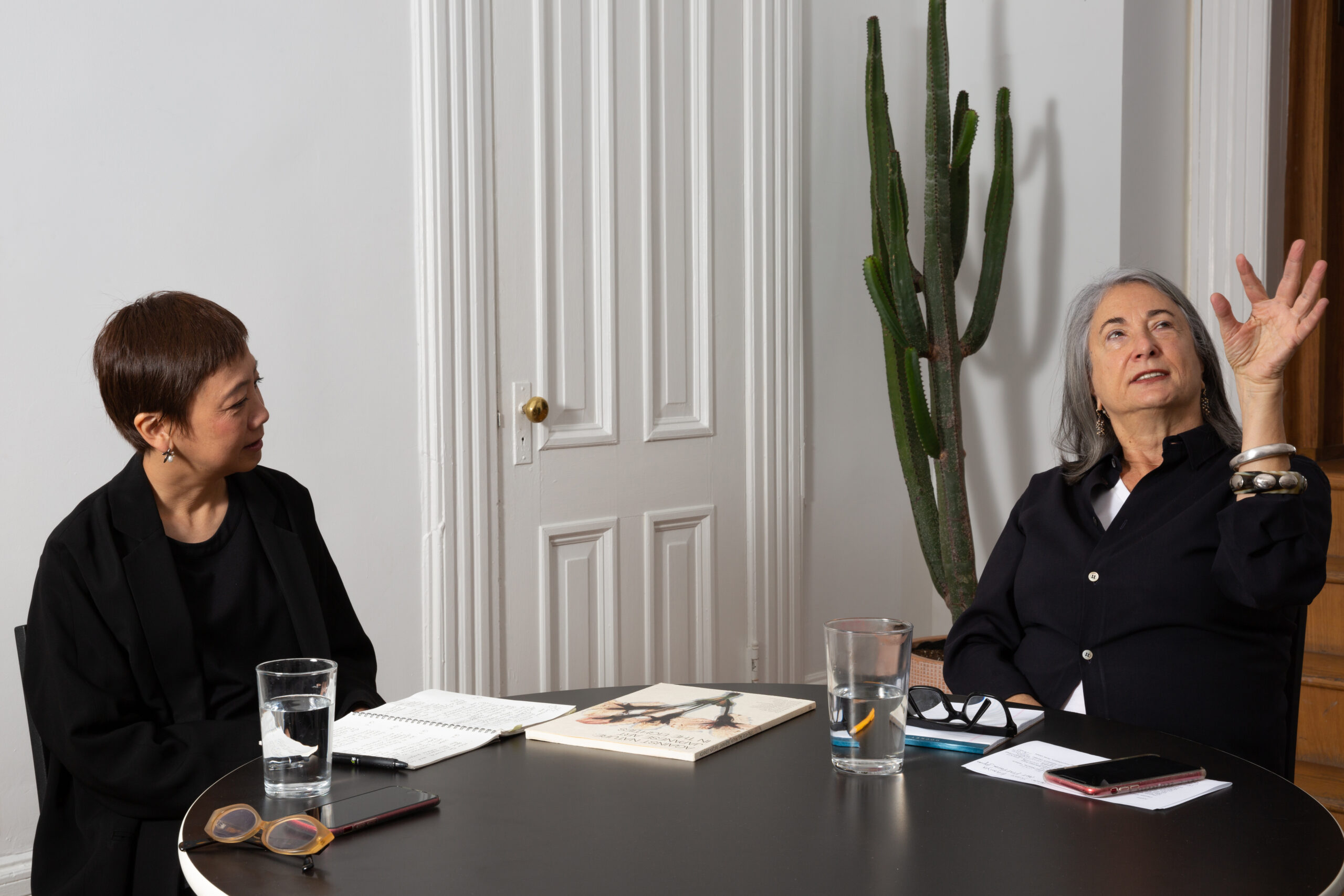
Halbreich: This show was enormously influential for me. It changed how I saw reality, it changed how I thought about expertise, and it changed how I thought about Western art history. Then, when I became the director of Walker I wanted to collect Gutai. And I think we were the first museum to buy Shiraga [Kazuo]. It took us a long time to find the right painting but we actually found it in Italy. Because Gutai was well seen in Milan, and we were also doing work on Arte Povera so there was a connection that Arte Povera artists talked about. It was a very interesting intersection. But then I got to MoMA and there was no Shiraga, at that time. And that’s the greatest museum of modern art!
And so, with MoMA director Glenn Lowry’s pushing, I started C-MAP, Contemporary and Modern Art Perspectives, something similar to what I did at Walker, although that was temporary. We invited curators from South Africa, Turkey, Brazil, Japan for seminars over three years; our curator also visited them. It stayed with me, this desire to go deeper to understand my own inadequacies better. It’s a form of psychoanalysis, I guess.
Kamiya: This is exactly what I wanted to ask: the impact of this experience, the research in Japan and collaboration. It’s your personal experience, but more than that—it encouraged and had an impact on Japanese artists, to increase their visibility and activities internationally.
Halbreich: More to actually help curators dismantle the certainty with which they approached art history. That, more than making visible any one country. For example, the multidisciplinary nature of "Against Nature" was to involve people who weren’t just art experts, but specialists in literature, performance, history. And that is also the form of C-MAP. Initially, there were three groups and each group met for three years, and I think once a month, maybe more, there were meetings with outside experts. And at the end of the year there was a big, joint seminar. Japan, Brazil and Eastern Europe were the first geographic concentrations. Eastern Europe is still going on, Southeast Asia and Africa have been added. But it was built on my own sense of what I thought was imperative for any really good curator, which was to, again, understand what they didn’t know. And it was actually so interesting to go back to Japan repeatedly, because we were there during the great economic resurgence, when there was so much optimism and money for everything, so much openness. And then we were there when the economy collapsed.
That had a huge effect on how people talked about their own country. I remember we went to Setagaya [Museum], after the collapse of the economy, and we were in one of these seminars again—Tom and I, and Shinji—and I will never forget this: it began with somebody explaining the history of Japan. I mean we knew the history by then. But it was out of a sense of maybe embarrassment. Japan has always had this history of being very open and then being kind of inward-looking. The collapse of the economy made people much more inward and much more uncertain that we would understand the extraordinary excellence of Japanese culture. It felt like they needed to almost reassure themselves of this history. I think you see it in this country too, the insecurity of people with economic decline. At that point, people need to sort of beat their chests so they remind themselves of former strength, or a different kind of strength.
Supporting the world in which artists survive
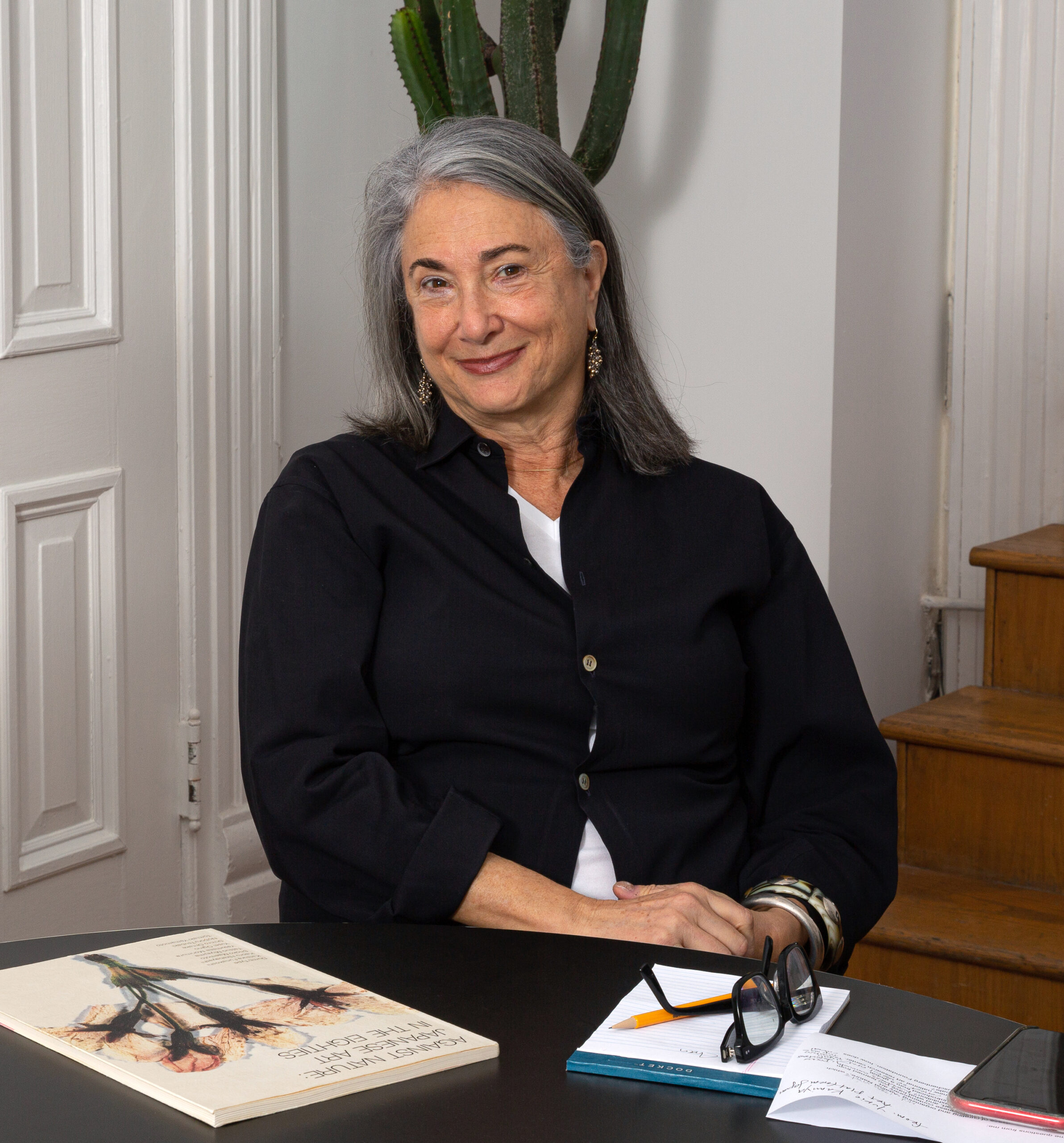 Kathy Halbreich
Kathy Halbreich
Kamiya: The impact of your research was powerful, and it flourished and bore fruit.
Halbreich: It was intellectually explosive, if you paid any attention. Again, it was dismantling a lot of what I knew, but what I learned was much bigger.
It’s interesting because of course Bob [Robert Rauschenberg] was a global citizen. I mean, he paid for ROCI [the Rauschenberg Overseas Culture Interchange] himself, which was his circuit around the globe to these countries that were primarily suppressing artistic freedom. Not only those places, because he made incredible work in other places, like Japan. But China, Cuba and Chile, for example, and he always wanted to talk to the artists who were there because he thought that kind of dialogue could create a foundation for peace. Now, I think he was a little naïve. I don’t think any of us really create the climate for peace. Bob believed artists change the world. I think artists change little pieces of their universe. I think it’s very important, clearly—I’ve spent my life hoping to give them greater opportunities. But Bob really believed that this journey could create greater opportunities for peace... Somehow, growing up in a little port town in Texas and being very poor, and then going in the army, he just had this gene which said, “Travel, young man.” And he did, all of his life.
Kamiya: After having senior positions in two major museums in the United States, and planting some seeds of Japanese and other cultures in the soil of the U.S., now you have taken over Bob’s vision. The [Robert Rauschenberg] Foundation also gives grants to some artists and supports them. Could you tell us how the Foundation supports art?
Halbreich: I like to say that Bob’s greatest gift to people like me, all of us who work here, is permission. He was a person who really had this radically open mind. Bob had a small foundation he set up called Change Inc., which gave money—when he was alive—to artists most in need. When Martin Puryear’s studio burned down, he told me he got a small grant. So many people tell me as I walk through the world, “Oh, Bob gave me a grant when I was most desperate.” When he died, that organization had to close for a bunch of reasons. But what we started here was two programs. One is for medical emergencies for artists, which was launched fortuitously just as the pandemic was starting. I just think the reality of how artists live is so overtaken by the stupidity of the marketplace. Most artists don’t have health insurance. But we started that and then during the pandemic we were one of the first funders of something called Artist Relief, which Deana Haggag—who is now at the Mellon Foundation but she was at U.S. Artists [United States Artists] then—she and partners raised $20 million for artists who were living in their cars. I mean, people lost their jobs, they lost everything. And Artist Relief was there to try to help the most worthy. I have to say, Sharon Ullman who’s the deputy director came to me with the idea and I said, But what’s the criteria? The criteria is need. And that was hard for me to understand at first. But then so many artists I knew actually were both great and had need; we funded them twice.
We also have a residency program in Captiva [Island, Florida], which is where Bob moved in 1970. I guess he got overwhelmed and tired by being famous in New York. I think it was actually something of a hardship, the demand, the stress. He was the youngest American winner of Golden Lion [at the Venice Biennale]. And I just think he decided, my art is going to suffer if I stay within this place of constant distraction. Having grown up in a port town, I think water was really important to him and he found Captiva and over time acquired 20 acres and 10 buildings. He allowed the people in the buildings to stay there until their death. He was a very generous human being. And we hire artists as writers for the Catalogue Raisonné, not just art historians. Glenn Ligon, Terry Winters and Amy Sillman are all writing for the first edition, which will be ready for Bob’s 100th birthday in 2025. And then, when I came here, I kind of looked around and I thought, Gee, it’s really weird, all these artist funding foundations and where are the artists? Chris Rauschenberg was the only artist on the board, for example. Now, Glenn Ligon is [also] on the board.
Kamiya: The presence of artists.
Halbreich: I think it’s imperative! But maybe the most adventuresome enterprise I started was the Artists Council. It’s anonymous, and I convinced the board to give them, initially, $500,000 a year. Now it’s $600,000 to distribute philanthropically as they see most necessary. And it’s not only arts organizations they fund. They have funded, for example, very small experimental presses. They have funded also, housing for unsheltered women in Oakland, California. They gave me a firm foundation for not only supporting artists directly but for understanding that the world in which artists survive has to be taken care of, otherwise art can’t survive.
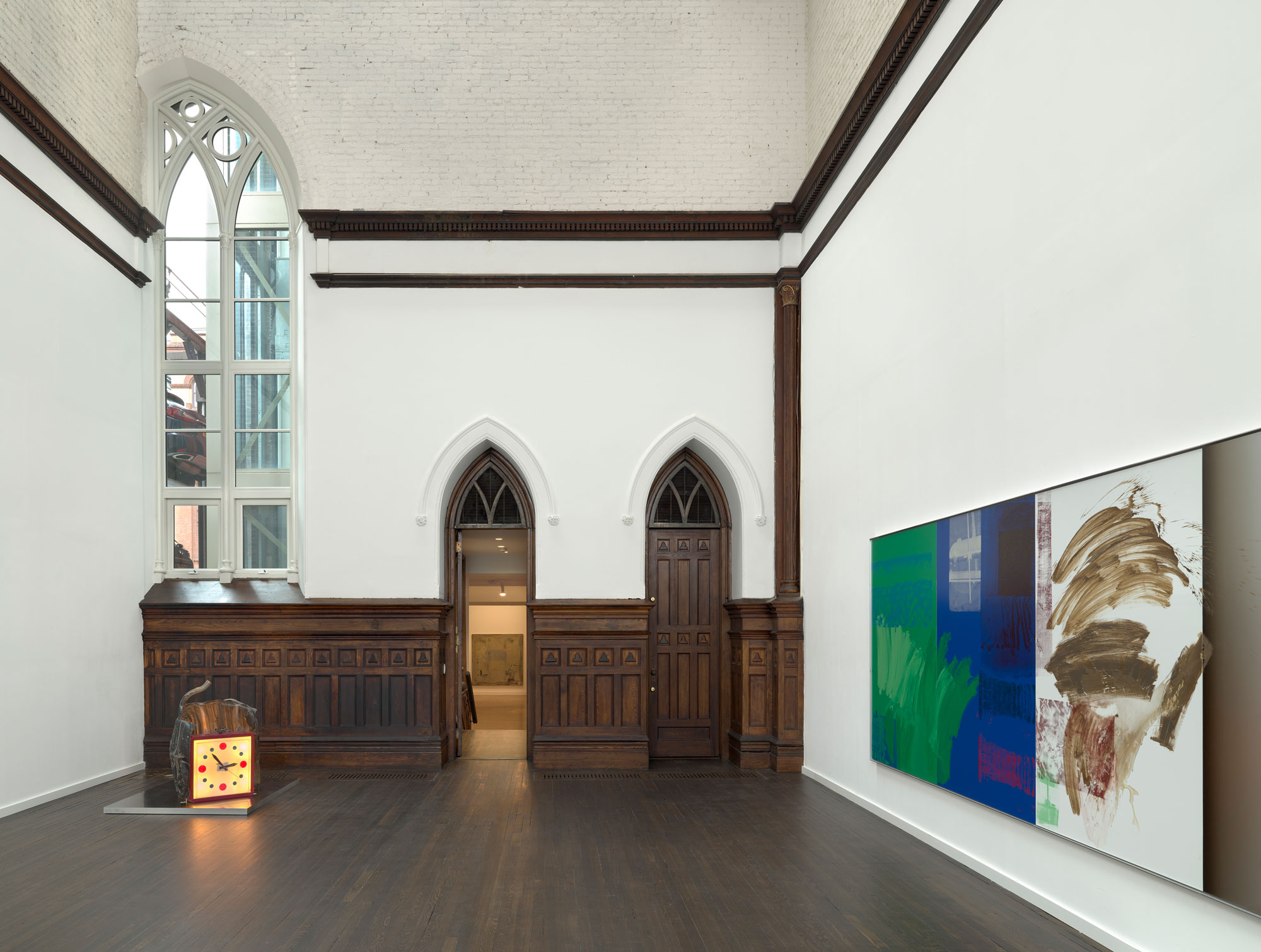 The Robert Rauschenberg Foundation's building has recently renovated, that was once the late Rauschenberg's home and studio. | Photo:Ron Amstutz, Courtesy of Robert Rauschenberg Foundation
The Robert Rauschenberg Foundation's building has recently renovated, that was once the late Rauschenberg's home and studio. | Photo:Ron Amstutz, Courtesy of Robert Rauschenberg Foundation
Actually, there’s a very beautiful quote from the spokesperson for the arts council, Paul Chan. He’s extraordinary, and he wrote for me a little paragraph about why funding organizations that are socially engaged and artists of conscience are inevitably linked: “Those grants reflect our commitment to honor and expand Bob’s artistic legacy. At their best, Bob’s work made room for all that was not—or not yet—worthy of aesthetic attention and was enriched by the multitude of social and political experiences that tend to enrich life itself, if the living allows them to. The council’s work to me fosters the overarching idea that art is enriched by all that is not art, because art that is multi-dimensional is more capable of envisioning a more vital and festive reality. This is why all that is not art must also be protected and supported if art is to flourish at all. The diversity of what we have funded is an argument for this idea.” The Foundation earlier funded, for example, an artists-as-activists program, focused on mass incarceration. And when I got here I said, “Oh it’s great, but what came out of it?” And nobody could tell me who benefited. Ultimately, maybe it was some incarcerated people, maybe politicians got another idea, but it was really the artists. So I thought, well, let’s continue to support artists but let’s support organizations whose mission is to change the world for better. One of the first grants we made in this arena was to an organization in Immokalee, Florida. I wanted to do something in the state where Bob lived, and it’s an organization that supports migrant workers who pick tomatoes. And honestly if you think slavery is gone, go to Immokalee. I mean, women were getting raped, there were no breaks, they were working in the sun all day, they were locked into trucks at night. And so this organization, through consumer pressure, that resulted in a workers bill of rights, has done a lot to erase that some. But during the pandemic we also funded Artists Space, Danspace, The Kitchen, organizations in New York that I thought, if I were to wake up and they were gone, I would really be bereft. We also funded free rehearsal space in six organizations across the country, because the research showed dancers were the most impacted by the pandemic. We found six small organizations and we gave them money that would cover dancers’ and choreographers’ time rehearsing in those spaces.
So, we support artists in lots of different ways. And most importantly, I think we have supported the agency of artists to guide us in understanding how to translate Bob’s values to 2022, ’23. Not that we replicate what he does, because he lived in a different time. But we are very cognizant of the values he had.
Involve artists, look at the periphery
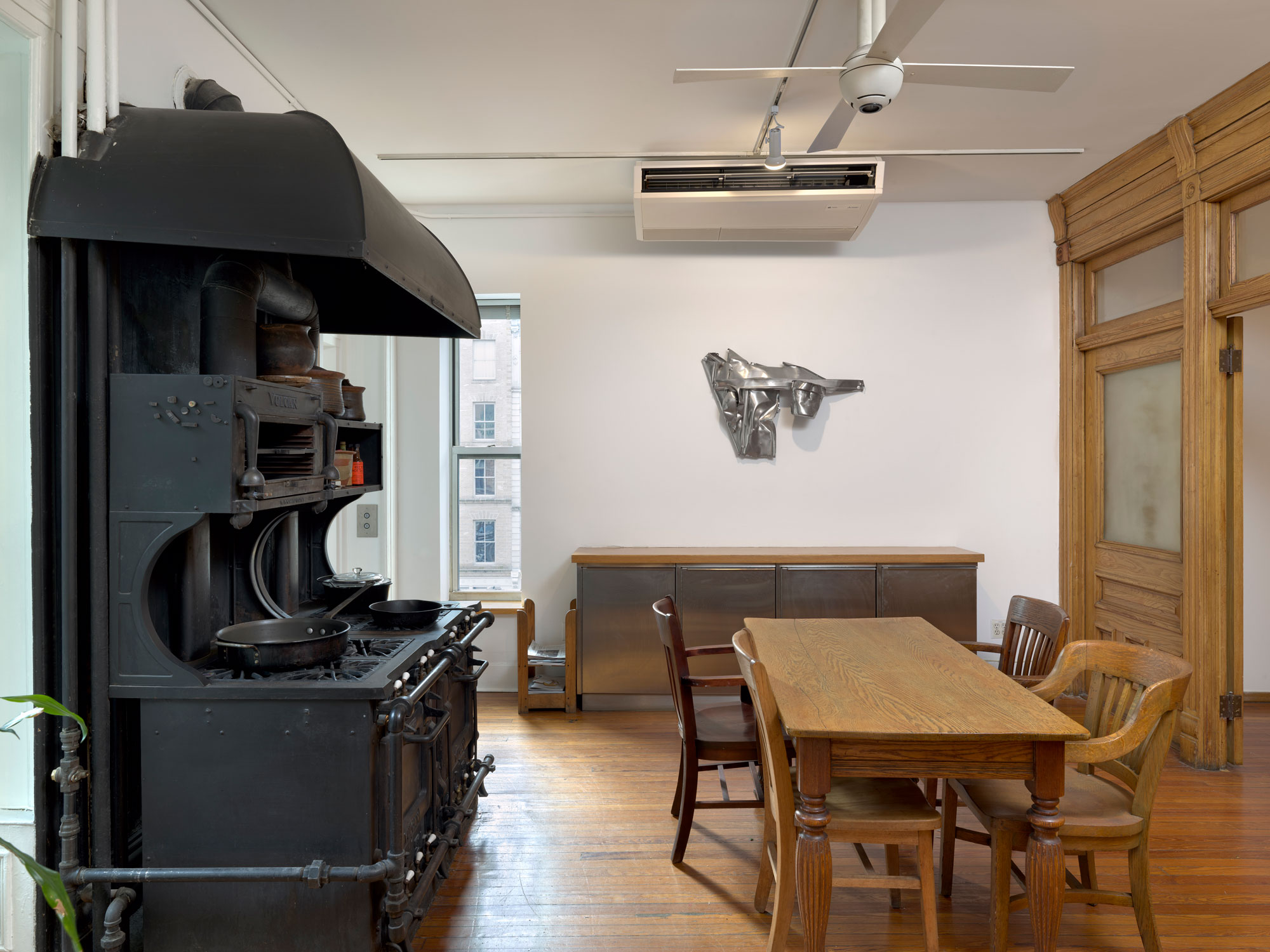 The kitchen space of the Robert Rauschenberg Foundation, whose equipment was originally used by Rauschenberg himself. | Photo:Ron Amstutz, Courtesy of Robert Rauschenberg Foundation
The kitchen space of the Robert Rauschenberg Foundation, whose equipment was originally used by Rauschenberg himself. | Photo:Ron Amstutz, Courtesy of Robert Rauschenberg Foundation
Kamiya: A new research center is going to follow this 5-year pilot project [of Art Platform Japan], and I want to ask what these organizations can do by way of support. What your foundation has done is not only support the creativity of art itself but be a kind of platform for art. And even more fundamental, the humanity to be artists, to survive as artists, insurance and also organization, you even support those parts, such as with the artist council.
Halbreich: Well, we knew we couldn’t actually change health insurance. We looked into that and it was just such a mega project—we’re still a really small philanthropic program, we give away about $4 million a year. I would say to the board, I don’t run a hospital, nobody’s gonna die, let’s go for broke and take risks on new ideas and emerging organizations. It doesn’t matter if something is brand new, we should be there. Maybe they’ll fail, who cares.
So, what would I say about a research center? I would say, involve artists as experts. Let them help you determine what areas need study—and it may not be the most obvious. I mean, I just went to a show on Sunday at Participant, which is a gallery on Houston Street. Anohni, formerly Antony and the Johnsons, she has a show about her theater company called Black Lips, which was in the ’90s, post the total devastation of AIDS in the artistic communities. She was on food stamps in the ’90s, she couldn’t get any support. Which is why she became Antony and the Johnsons because she could make a better living at music than theater, where she got paid $5 a week. And for three years her company, Black Lips, did a new play every week; most of the actors were trans. But it’s so liberating, I mean, they had nothing, they were just fantastically creative people. I think a research center, such as the one you’re talking about, should preserve lesser-known histories. If it were here, it would make sure that the history of downtown theater doesn’t disappear with all the people who died of AIDS. There are still people alive who were there, who are still performing. I’ve always believed that the most interesting thing Walker did was decide to look at the periphery rather than to try to emulate the “centrality” of everybody else’s collection. It made us do more research: Japan, Nam June Paik, Fluxus, and Beuys, even multiples. So, we developed quite an extraordinary collection on a very limited budget because nobody was paying attention to the periphery, which now is the center. So, I think if I was to offer advice to a research center – look at the periphery. Involve artists.
Kamiya: Outside of the lines.
Halbreich: Exactly.
No substitute for feet on the ground
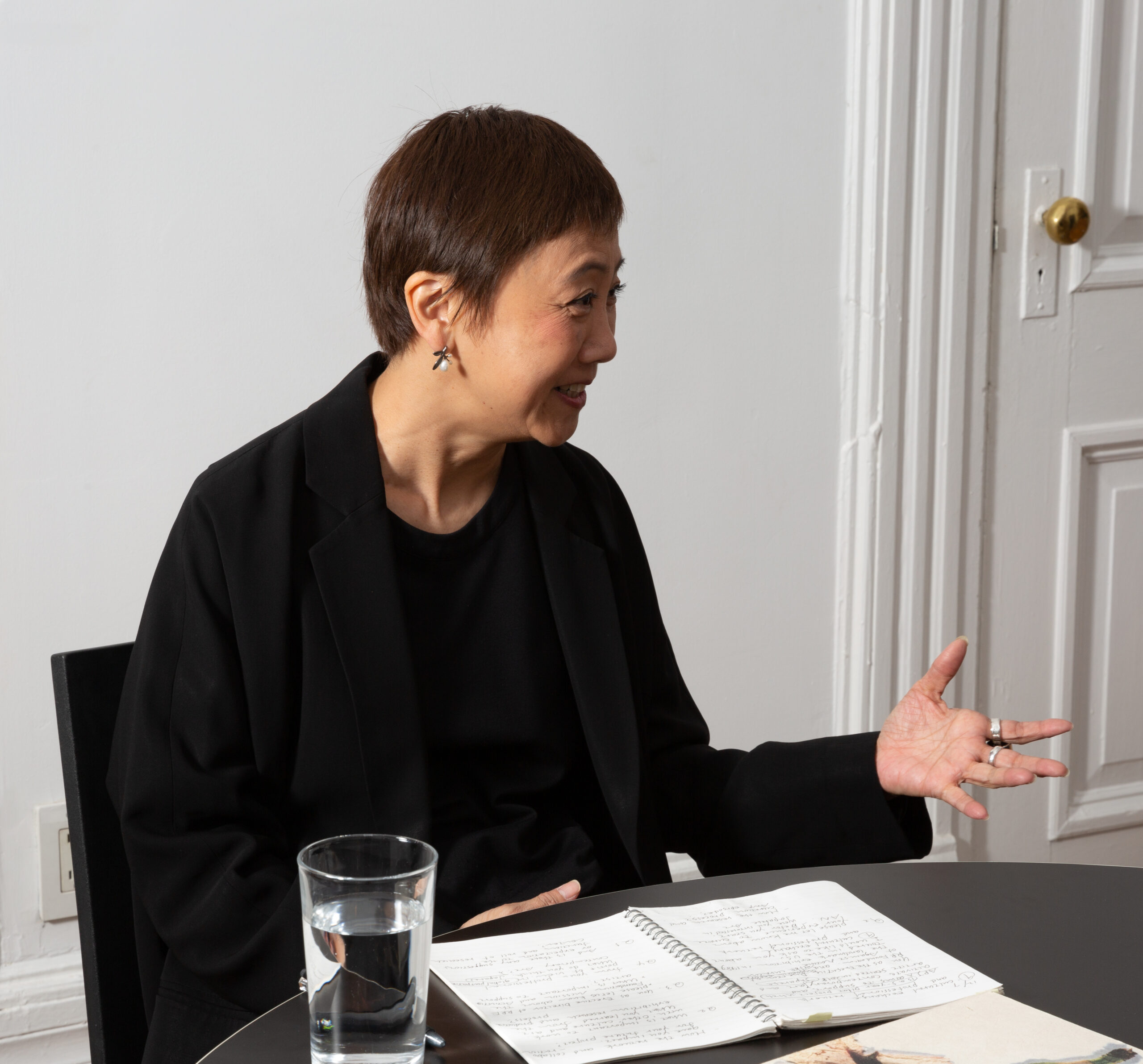 Kamiya Yukie
Kamiya Yukie
Halbreich: Now here’s the most difficult thing that I’ve been thinking about since you asked me to do this: I’m not sure I believe anymore in exhibitions that are prescribed by nationhood.
Kamiya: This is another problem. Maybe times have changed.
Halbreich: I think they have. I think we saw the toxicity of globalism in a way that we didn’t quite in the ’80s and that makes it more complicated to expose Japanese artists to the wider network. But I think the best way is to invite people there. I just think there’s no replacement for having your feet on that ground. I mean, we traveled very widely. But if you’re in Tokyo and you’re walking down the street and you see all this neon and all these new shiny buildings, and you walk two blocks behind that and it’s old wooden houses, you suddenly understand that collision of time zones, if you’re not there, if you’re not walking around the streets, you can’t.
Kamiya: The pandemic made me realize that to be on-site is such a precious experience.
Halbreich: Totally. I looked at so much when I was isolated by myself. And I’m very grateful for Zoom and all this stuff on YouTube... [But] it’s not the same. I still don’t believe you can see a performance online and have—the sweat isn’t spinning off the dancer at you. I think it’s very important.
When I was doing the [Sigmar] Polke show, you would think I would understand German history given my generation... But I went to Cologne 16 times; I had read deeply. He had died early on in the research, but I was able to look at all the books in his library. You just have to be there.
But I can’t answer the question, the conundrum, of what replaces exhibitions about a nation of artists... But I think exposure cannot be underestimated. Even suffering jet lag, it tells you something. Anyway, I think it was really fantastic that The Japan Foundation had us all come, and then allowed Tom and me to come back multiple times. They were very important.
Kamiya: Thank you, Kathy, on behalf of the Japanese arts scene. Your curiosity and your respect for Japan, I’m really touched to hear all the stories.
A note from Kathy Halbreich:
I announced in January I would be stepping aside as Executive Director of the Robert Rauschenberg Foundation at the end of May as many of my goals have been met and I truly believe it is most desirable to create opportunities for the next generations of leaders. I leave with a great sense of accomplishment and satisfaction, having worked with remarkable people. Bob’s legacy is secure and I think our philanthropy made a difference in people’s lives during very difficult times. While I don’t know what I will do next, I know it will involve continuing to work with artists from whom I have learned so much.
Interlocutor Profiles
Kathy Halbreich: Executive Director, the Robert Rauschenberg Foundation
Kathy Halbreich was appointed Executive Director of the Robert Rauschenberg Foundation in September, 2017 and will step down in May, 2023. Prior to her appointment, Halbreich was named the first Associate Director of The Museum of Modern Art in 2008 and later the first Laurenz Foundation Curator, as well. She organized major retrospectives of Sigmar Polke and Bruce Nauman. Halbreich served as director of the Walker Art Center for 16 years, fortifying its reputation as one of the most rigorous multidisciplinary arts organizations in the world. Inducted into the American Association of Museums Centennial Honor Roll, a recipient of the Award for Curatorial Excellence from Bard College, and named a Chevalier of the French Order of Arts and Letters, Halbreich has served as commissioner for North America and Cuba at the Gwangju Biennale (1995) and curatorial advisor for the Carnegie International as well as a member of the Documenta X and Documenta XIII International Committees. Halbreich served on the boards of the Doris Duke Foundation and the Andy Warhol Foundation.
Kamiya Yukie: Curator, Art Critic
Born in Kanagawa, based in New York, Kamiya served as Gallery Director at the Japan Society in New York, Chief Curator of the Hiroshima City Museum of Contemporary Art in Japan, and Associate Curator of the New Museum in New York. She co-curated the 12th Shanghai Biennial (2018-19). Kamiya has organized exhibitions bridging Asia and other regions around cross-temporal themes with an interdisciplinary approach, and curated/co-curated monographic exhibitions on the work of Cai Guo Qiang, Morimura Yasumasa, Ono Yoko, Ozawa Tsuyoshi, Simon Starling, and Do Ho Suh, as well as group exhibitions such as “Discordant Harmony: Critical Reflection on the Imagination of Asia” (2015-18), "Re:Quest Japanese Contemporary Art since the 1970s" (2013) and others. She was awarded the Academic Prize from the Western Art Foundation in Japan (2011). As a member of AICA (International Association of Art Critics), her writings have appeared in many publications, including Hiroshi Sugimoto: Gates of Paradise, Skira/Rizzoli (2017), Ravaged: Art and Culture in Times of Conflict, Mercatorfonds (2014), California-Pacific Triennial, Delmonico Books (2013), and Creamier: Contemporary Art in Culture, Phaidon (2010). She received her BA from Waseda University, and completed the Curatorial Program at De Appel, Amsterdam.
Photos: Ofra Lapid
Edit & Text: Kiri Falls
